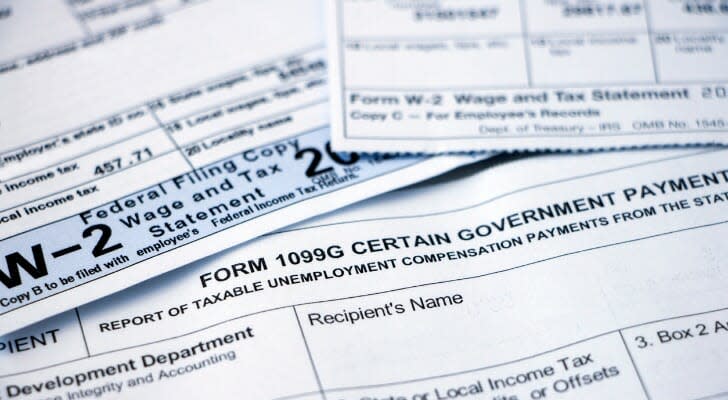What is a Tax Cliff?
A tax cliff happens when a small increase to your income triggers an increase in your tax bill. Personal income taxes increase gradually as a proportion of income; even if your income increases to the point that you enter a new tax bracket, only the income that falls into the bracket is taxed at the higher rate. Tax cliffs, on the other hand, occur when the tax code triggers a credit, deduction or increase at a very specific amount of income. Cross that threshold and you will change your taxes significantly. Here’s how it works.
How Income Taxes Work
The U.S. income tax system is what’s called a “progressive taxation” system. This means that an individual’s tax rate increases the more money they earn. This is as opposed to a flat tax system, which applies the same tax rate to everyone regardless of income.
America’s income tax achieves this by taxing people based on income brackets. Every segment of income that someone earns has a specific tax rate, which applies only to income within that range. For example, at time of writing a single filer paid:
10% on income between $0 and $9,700;
12% on income between $9,701 and $39,475;
22% on income between $39,476 and $84,200.
An individual who makes $39,476 in taxable income would then pay the following:
Their first $9,700 of income taxed at 10%. This comes to ($9,700 – $0) = $970.
Any income between $9,701 and $39,475 is taxed at 12%. This means they pay 12% only on the $29,774 which they made in this bracket, since $39,475 – $9,700 = $29,775. This comes to $3,573 in taxes.
Any income between $39,476 and $84,200 is taxed at 22%. This means they pay 22% only on the $1 which they made in this bracket, since $39,476 – $39,475 = $1. This comes to $0.22 in taxes.
Together, then, this individual owes $970 + $3,537 + $0.22 = $4,507.22 in taxes. The IRS would round this off to $4,507.
This is a gradual income system. Because each tax rate only applies to the income within its bracket, a single dollar of additional income will never trigger a major change in someone’s tax bracket liability.
How Tax Cliffs Work
A tax cliff occurs when a given deduction, credit or tax increase occurs at a specific amount of income. Instead of phasing in or out, the way a gradual tax does, cliffs incur changes to your tax liability immediately upon reaching a certain income threshold.
For example, a tax deduction available to everyone earning less than $75,000 would be considered a tax cliff. As soon as you make $75,001 you would lose the entire deduction, increasing your taxes significantly based on a minor change to your income.
A common real world example of a tax cliff is state estate taxes. In New York, estates have an exemption of up to $5.85 million (at time of writing). All estates smaller than this owe no taxes when they transfer. Any estate that is 5% larger than the exemption pays taxes on its entire value. In other words, at $6.14 million an estate falls over the cliff and owes taxes on its total value, not just the amount in excess of the exemption.
That additional $290,000 in value triggers more than $500,000 in taxes.
There are several tax cliffs in the federal code. For example, the Earned Income Tax Credit (EITC) is a refundable income tax credit designed to help lift people out of poverty. For most people it phases out as income increases, to the point where someone becomes completely ineligible once they meaningfully exceed the federal poverty level. However, the EITC also contains a provision that makes someone totally ineligible if they have more than $3,600 of investment income.
At $3,600 of investment income, you can qualify for the full EITC. At $3,601 you qualify for none of it.
The tuition and fees deduction works in a similar way. This allows you to deduct several thousand dollars of educational expenses if you, your spouse or your dependents were students during the year. However this deduction only applies to filers who earn $80,000 or less ($160,000 if filing jointly).
At $80,000 of income you can claim a tax deduction worth up to $2,000. At $80,001 you can claim none of it.
Benefit Cliffs
The idea of a cliff is not limited to taxes. This is an issue also common to public benefits programs.
For low-income Americans, their total income is a combination of their earnings from work and their benefits from government support programs. These programs include unemployment insurance, SNAP (food stamps), Medicaid, energy assistance, housing assistance, tax credits, child health insurance, Social Security and many more. Most public support programs are designed to phase out as an individual’s income grows, zeroing out entirely once someone makes enough money to not rely on public assistance.
However, often an individual’s benefits will decrease more quickly than their wages increase. We saw an example of this above with the EITC, where a relatively small income increase can cost someone a significant tax credit.
It’s difficult to pinpoint specific examples of benefit cliffs in action because they are the result of the extremely complicated set of public support programs that the U.S. relies on. A low-income household will often depend on several different forms of public assistance to pay for different aspects of life, from their heating bills to health care insurance, and these programs all have different requirements for work, family size, income and location.
Yet the result is consistent. For many people, benefits can work just like taxes. A benefit worth an extra dollar can actually result in less personal income.
The Bottom Line
A tax cliff occurs when a small change in benefits or income can trigger a large change in your tax status. This can happen either by losing a tax deduction or credit, or by applying new forms of taxes.
Tips for Handling Taxes
Consider talking to a financial advisor about avoiding a tax or benefit cliff. Finding the right financial advisor who fits your needs doesn’t have to be hard. SmartAsset’s free tool can match you with up to three local financial advisors, and you can choose the one who is best for you. If you’re ready, get started now
An online tax calculator can give you a quick estimate of what your taxes are. Also, be sure to learn about tax credits, a benefit that can lower your tax bill dollar-for-dollar.
Photo credit: ©iStock.com/fstop123, ©iStock.com/Darylann Elmi, ©iStock.com/Everste
The post What is a Tax Cliff? appeared first on SmartAsset Blog.



